
Oceanic whitetip shark Facts
- This majestic yet dangerous predator of the depths most frequently goes by the descriptive common name of the Oceanic whitetip shark. Yet, the animal also holds less often used titles. These include such terms as nigano shark, brown shark, and simply whitetip shark.
- Within the scientific community, however, it’s perhaps much better known by its formal moniker. But that’s an extremely hard name to pronounce for the layperson. That’s because this marvel of nature bears the complex technical title of the Carcharhinus longimanus.
- A degree of controversy persists inside the halls of science, though, concerning that specific appellation. The first known formal description of the fish occurred in 1831, due to the work of the French naturalist, René-Primevère Lesson, who gave it a somewhat similar name.
- The next description of the fish, however, took place in the year 1861, at the hands of the Cuban zoologist, Felipe Poey. He also provided it with a similar yet different moniker. Given this confusion, and still many others, the name used here is generally the most accepted.
- Sadly, the population of the remarkable Oceanic whitetip shark measures quite small. It also appears to be continuing to diminish at an alarming rate. That state apparently holds true throughout its range. The IUCN thus currently lists the fish as Critically Endangered.
- It faces numerous threats to its continued existence. Most of these stem from the actions of man. These include such various factors as being actively fished for its meat and fins. The creature also now faces the dual dangers posed by habitat loss and ongoing climate change.
Related Articles
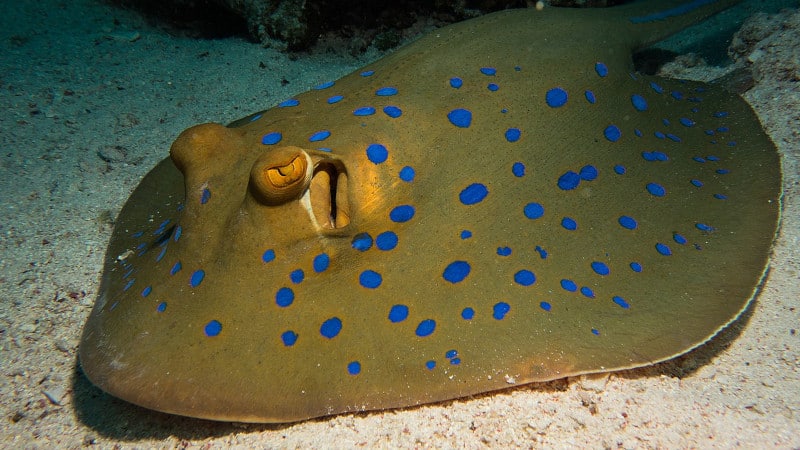

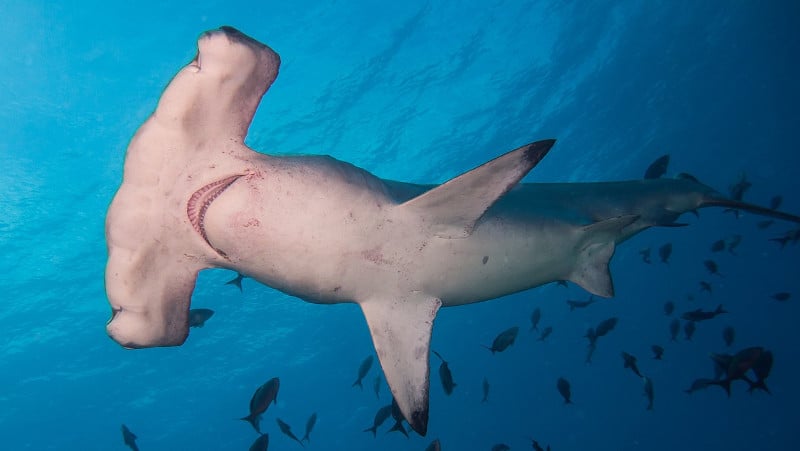
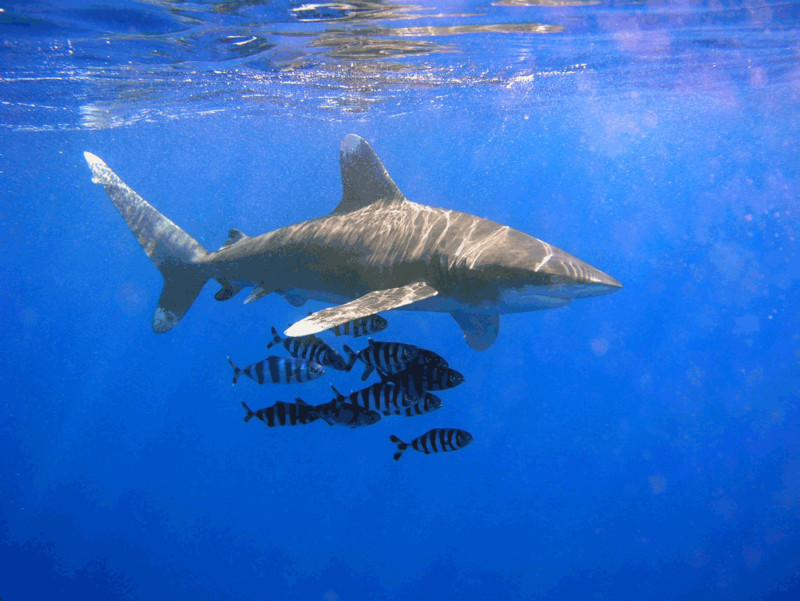
Oceanic whitetip shark Physical Description
The mesmerizing Oceanic whitetip shark immediately captivates many fortunate enough to encounter the animal in its native environment. Unlike some species, though, it does so for several reasons. That’s due to the fact that it’s visually impressive due to both its appearance and size.
In that respect, the shark clearly follows a pattern common among many of its relatives. That’s true since it displays a certain degree of the physiological characteristic known as sexual dimorphism. In its specific case, though, this trait manifests itself purely in terms of physical measurements.
More precisely, the female of the species attains a slightly greater overall size than her male counterparts. This gender of the intriguing fish reaches an average body length of roughly 12.8 ft (3.9 m). These individuals further grow to an average body mass equaling 374.8 lb (170 kg).
Males of the creature, however, only attain an average length of body measuring about 9.8 ft (3 m). They do tend to have a slightly stockier build than the females, though. Due to this general development, their body mass is an only slightly lighter average of about 368 lb (167 kg).
In terms of overall appearance, other than this, however, both sexes of the Oceanic whitetip shark remain virtually indistinguishable at a quick glance. The upper body of the fish typically displays a gray-bronze shade. Its lower body, though, generally manifests a somewhat off-white shade.
Yet it’s the fins of the awesome animal that serve as the source of the common name. Most of these display a bright white tip. Each fish also presents a mottled pattern among adults, and black in younger specimens. A patch resembling a saddle somtimes appears between two dorsal fins.
- Kingdom: Animalia
- Phylum: Chordata
- Class: Chondrichthyes
- Order: Carcharhiniformes
- Family: Carcharhinidae
- Genus: Carcharhinus
- Species: C. longimanus
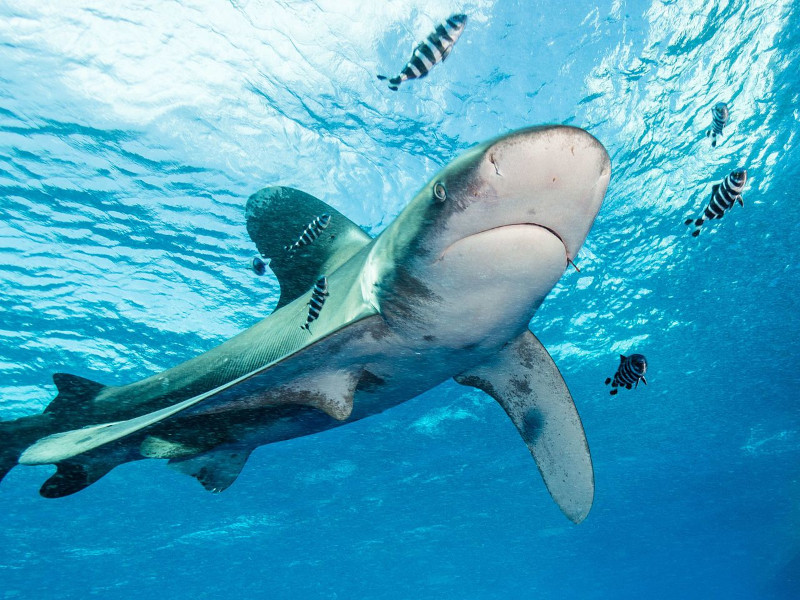
Oceanic whitetip shark Distribution, Habitat, and Ecology
The fascinating Oceanic whitetip shark evolved as native to an extremely broad swathe of the surface of the globe. The full extent of that zone of habitation might surprise some people, though. That’s because this wonder of evolution lives in oceans worldwide between latitudes 45 N and 43 S.
The vast majority of this range of appearance consists of relatively to extremely deep waters. The creature also displays decided preferences for the temperature of the waters it lives in, as well. It also seems to favor temperatures above 68F (20C), and up to approximately 82F (28C).
Yet the fish also shows some moderate flexibility in this regard. That’s true since a certain percentage of observed specimens appeared in waters having a temperature equaling about 59F (15C). The animal does, however, seem to studiously attempt to avoid temperatures lower than this.
Despite mainly living in regions of great depths, though, it spends most of its time in the upper layers of the ocean. Most sightings occur at depths of no greater than 490 ft (150 m). Though most spotted individuals remain offshore, some do venture into areas as shallow as 120 ft (37 m).
The beautiful Oceanic whitetip shark typically lives a primarily solitary life, like many. Small, temporary groups do sometimes form, however, for hunting and feeding purposes. The animal also evolved as an active hunter, swimming and seeking out prey by both day and night equally.
As a general principle, the fish usually feeds on an impressive variety of cephalopods, like small squid, and bony fish, such as oarfish and barracuda. Yet it sometimes varies this, adopting a more flexible diet. At these times, it eats such prey as stingrays, birds, crustaceans, and sea turtles.
Species Sharing Its Range

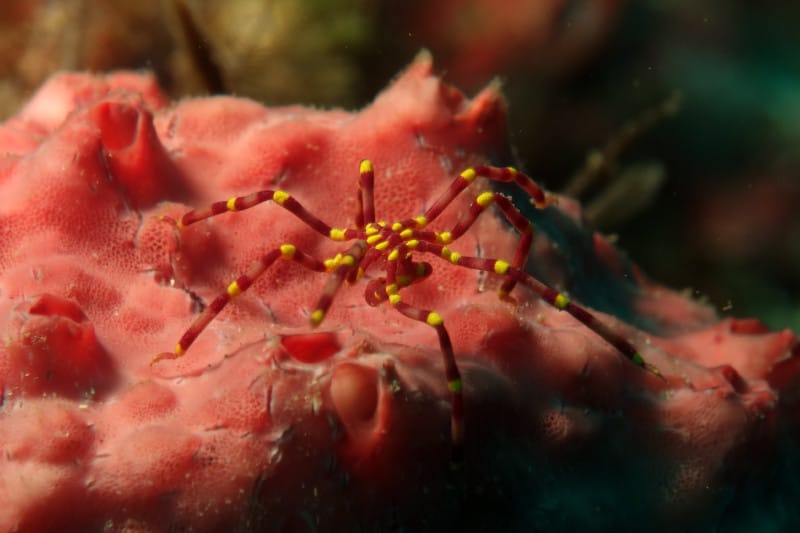

Check out our other articles on 5 Beautiful North American Birds, Harp Seal, Macquarie Island, Southern Darwin’s Frog, Rosy Veincap, Nicobar Pigeon, Southern Plains Bumblebee, Philippine Cobra









Leave a Reply